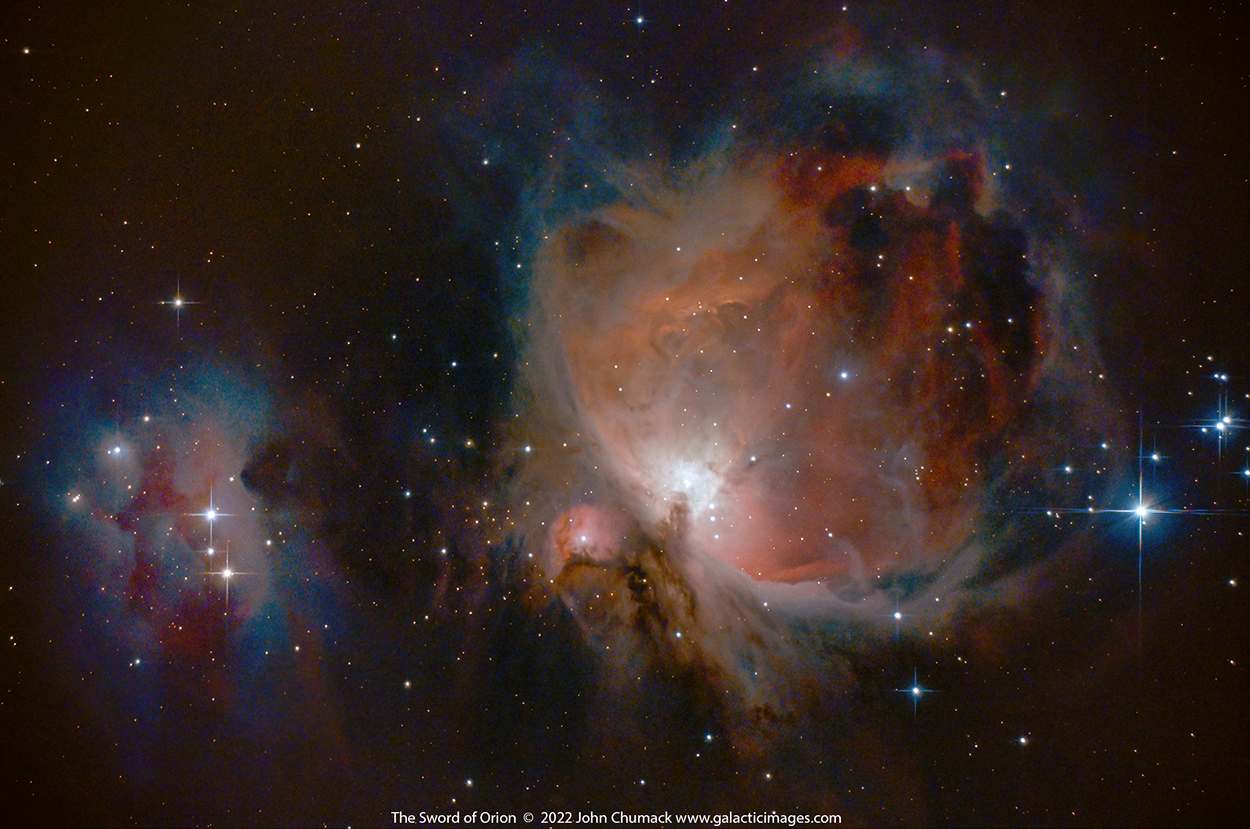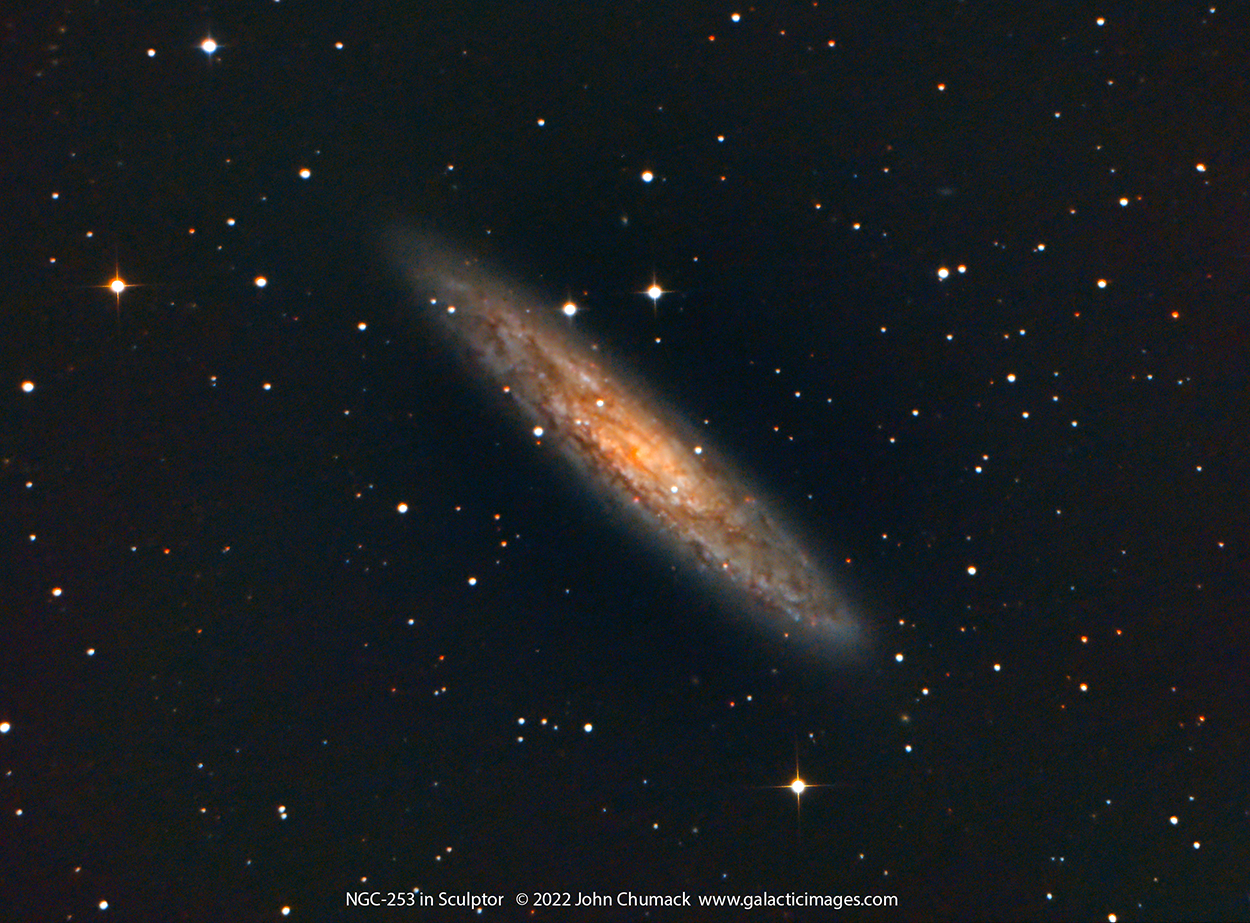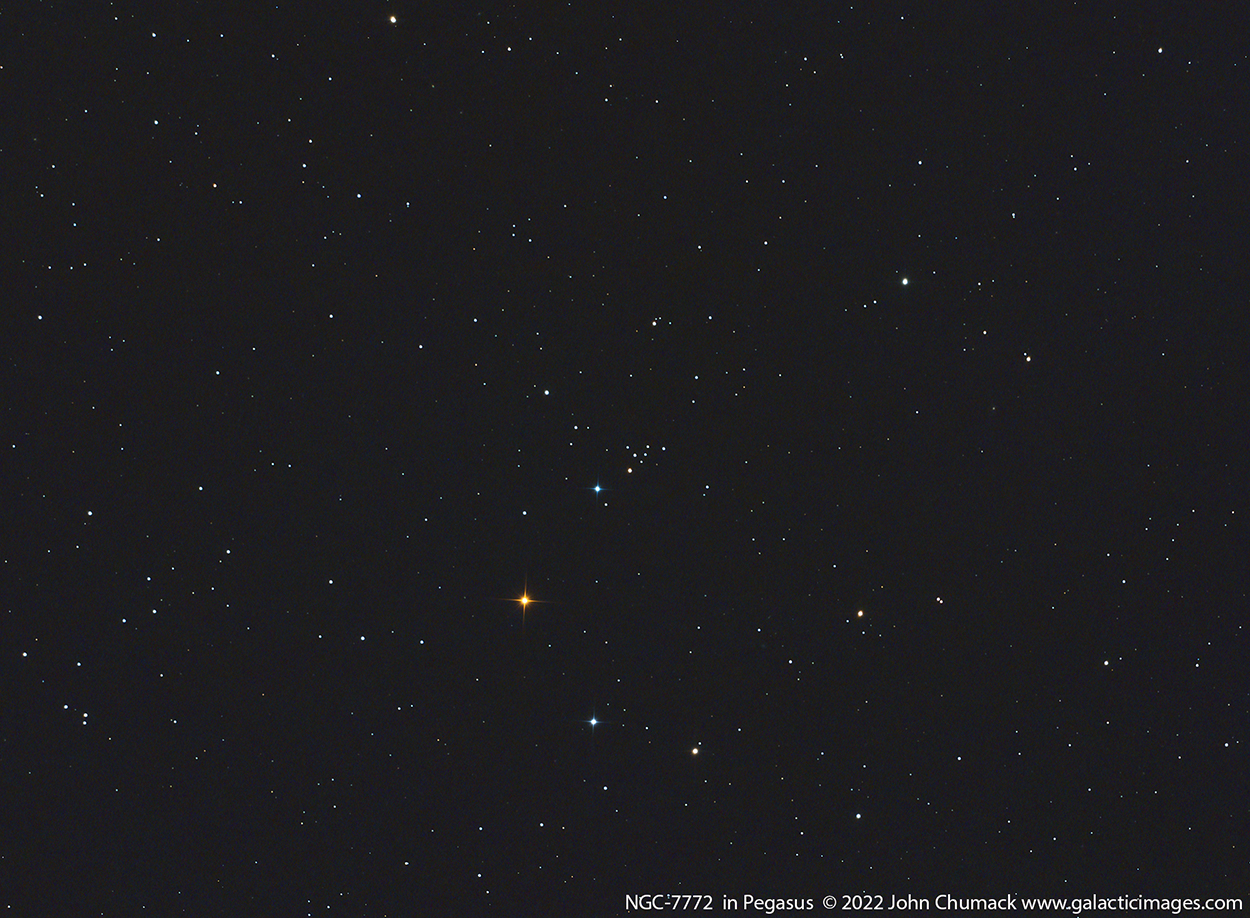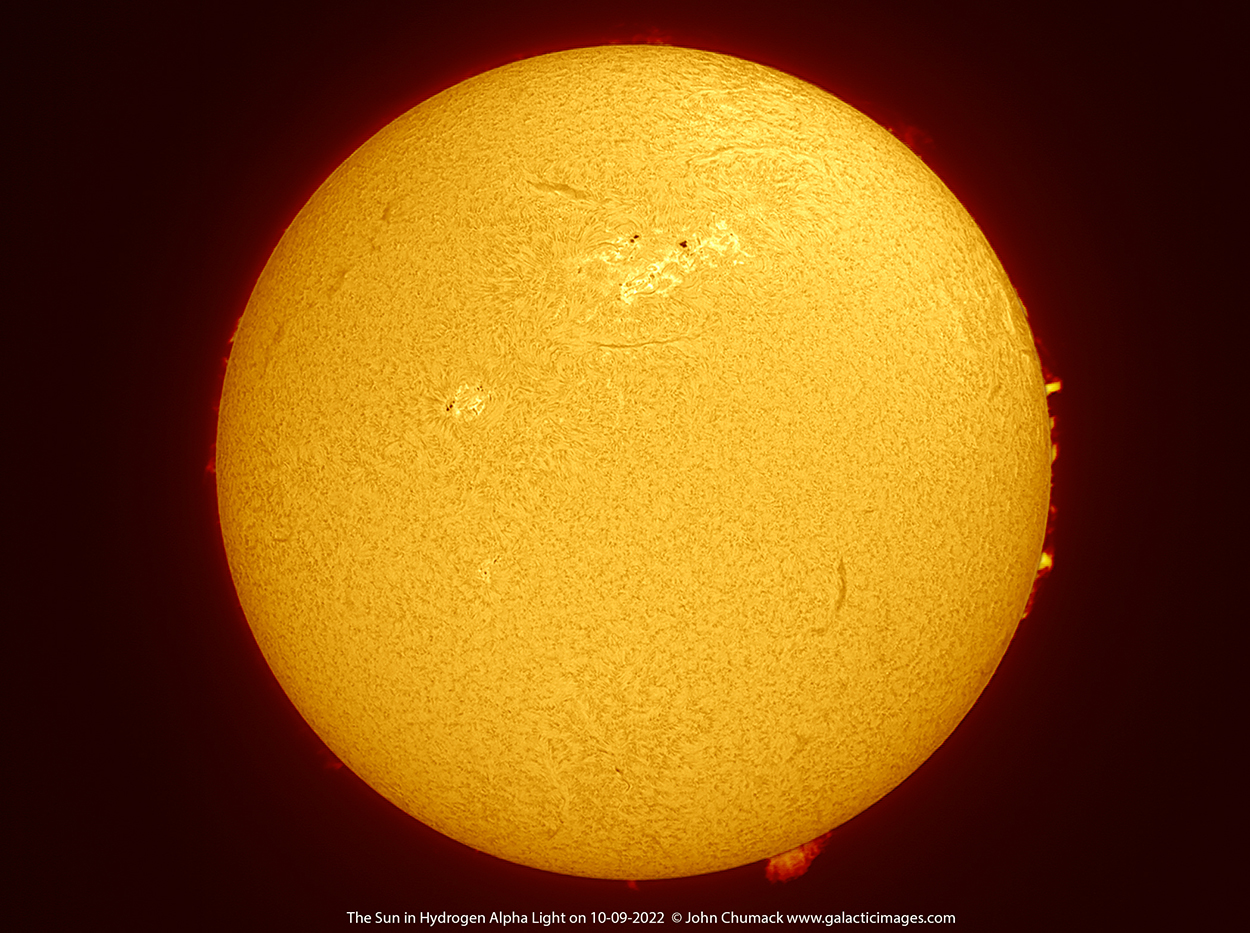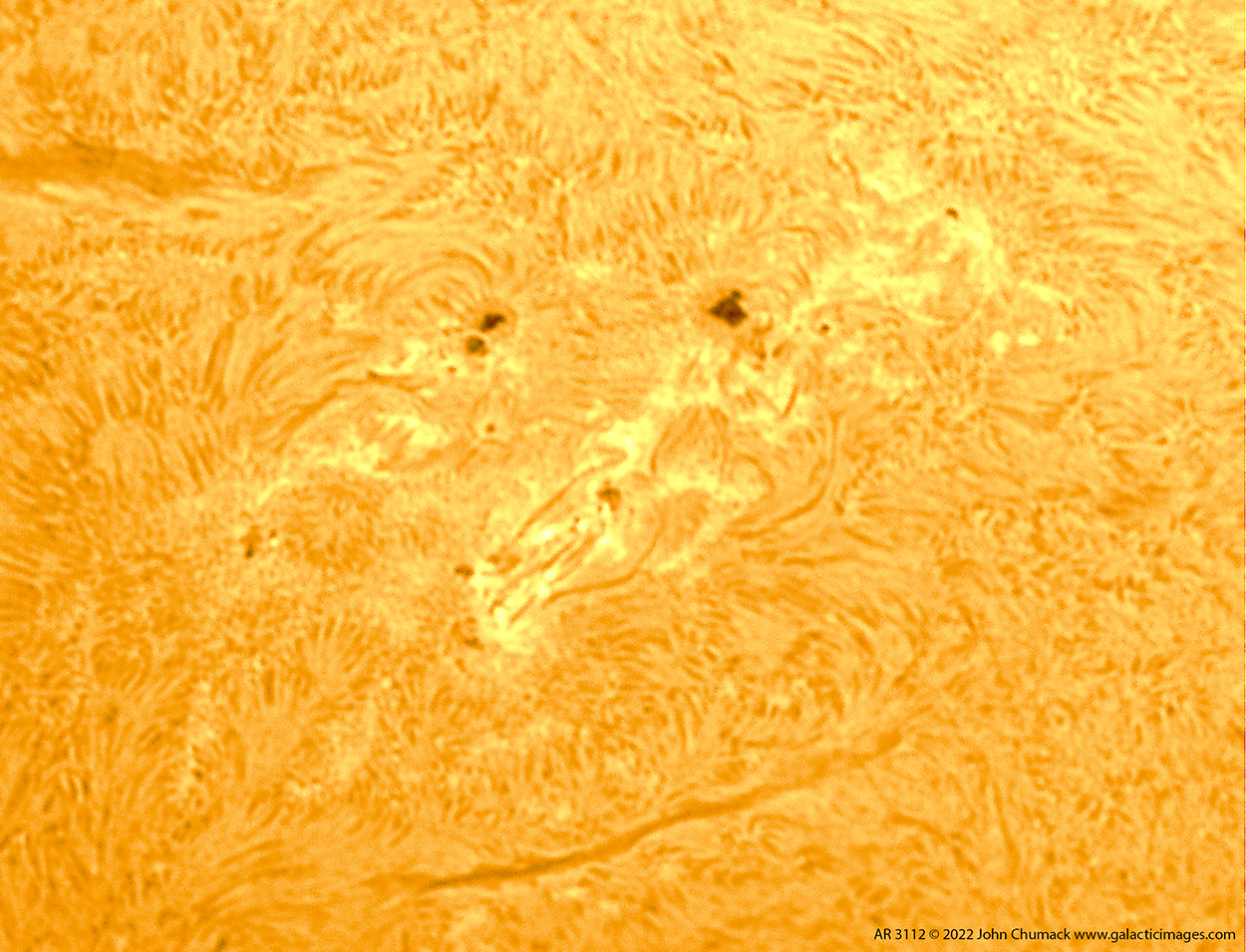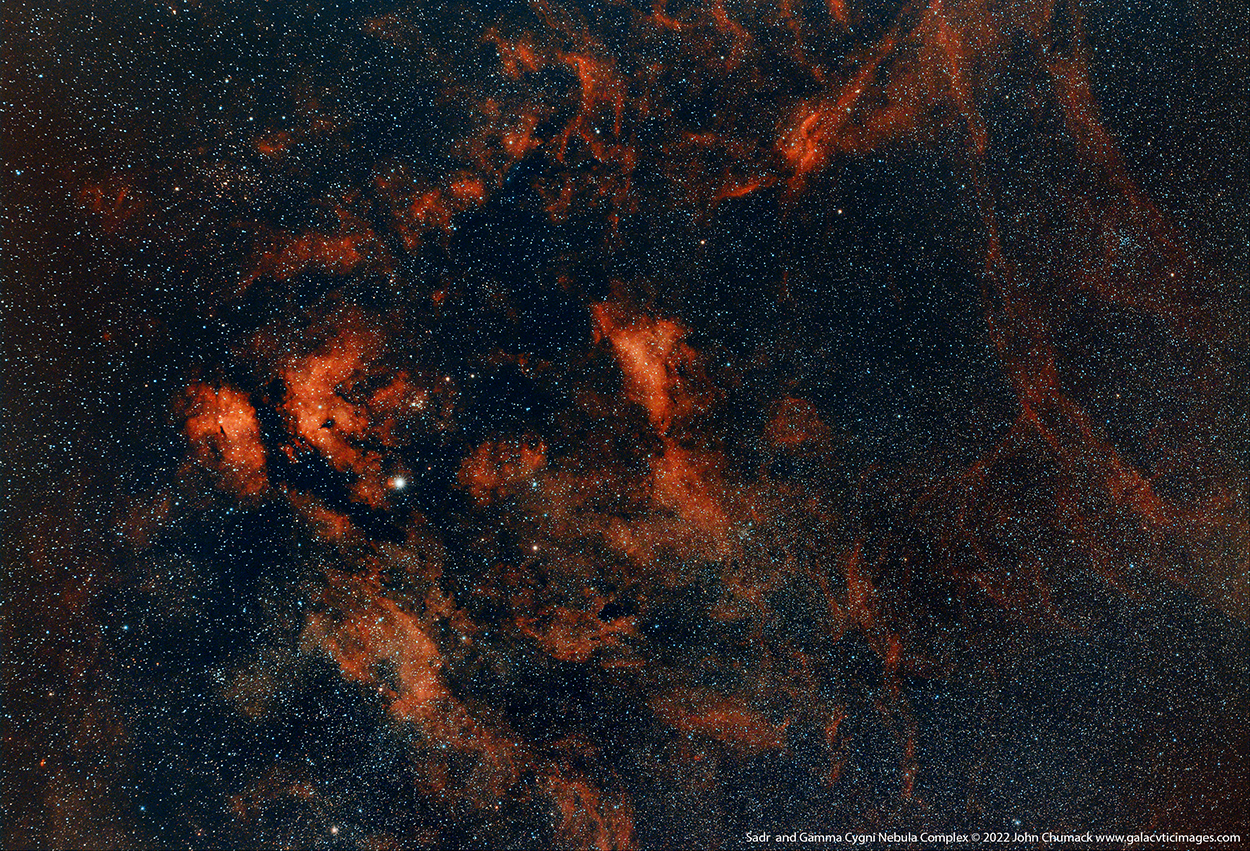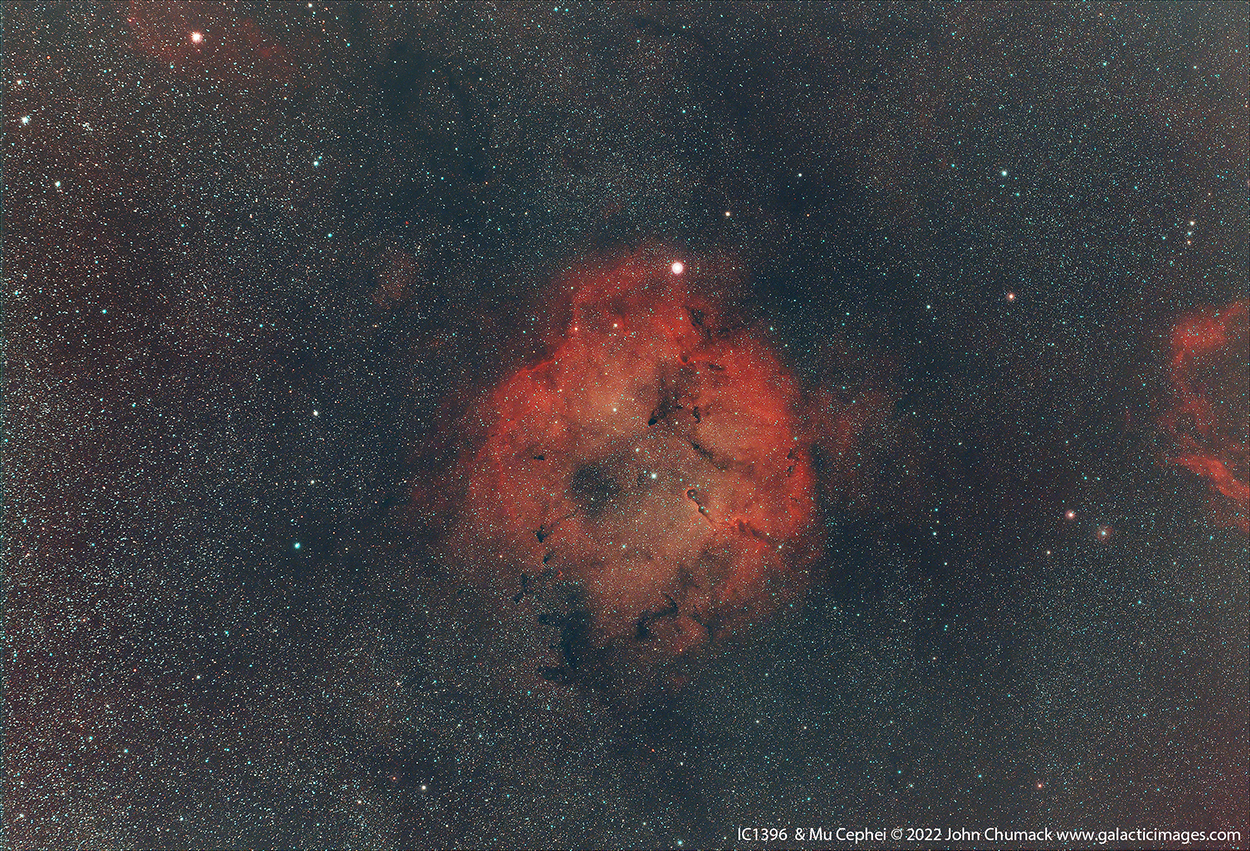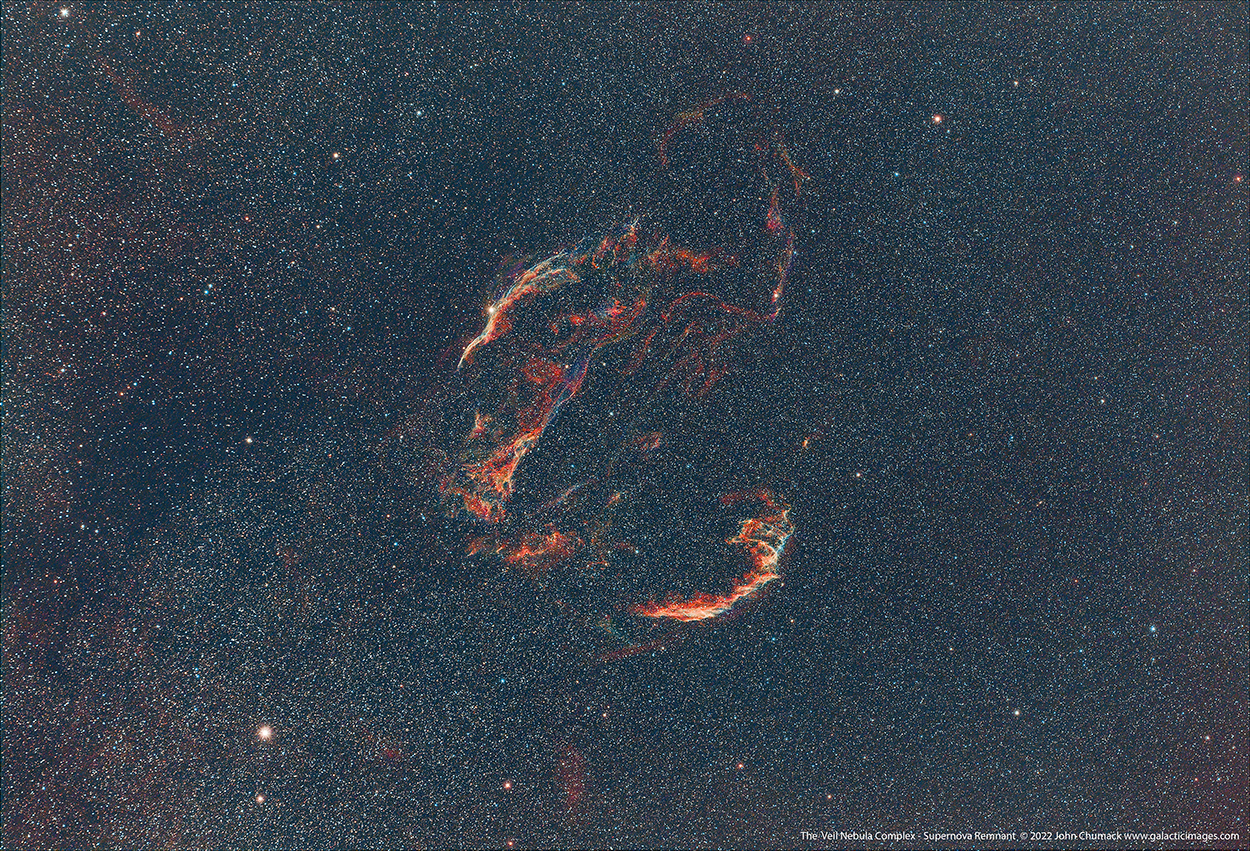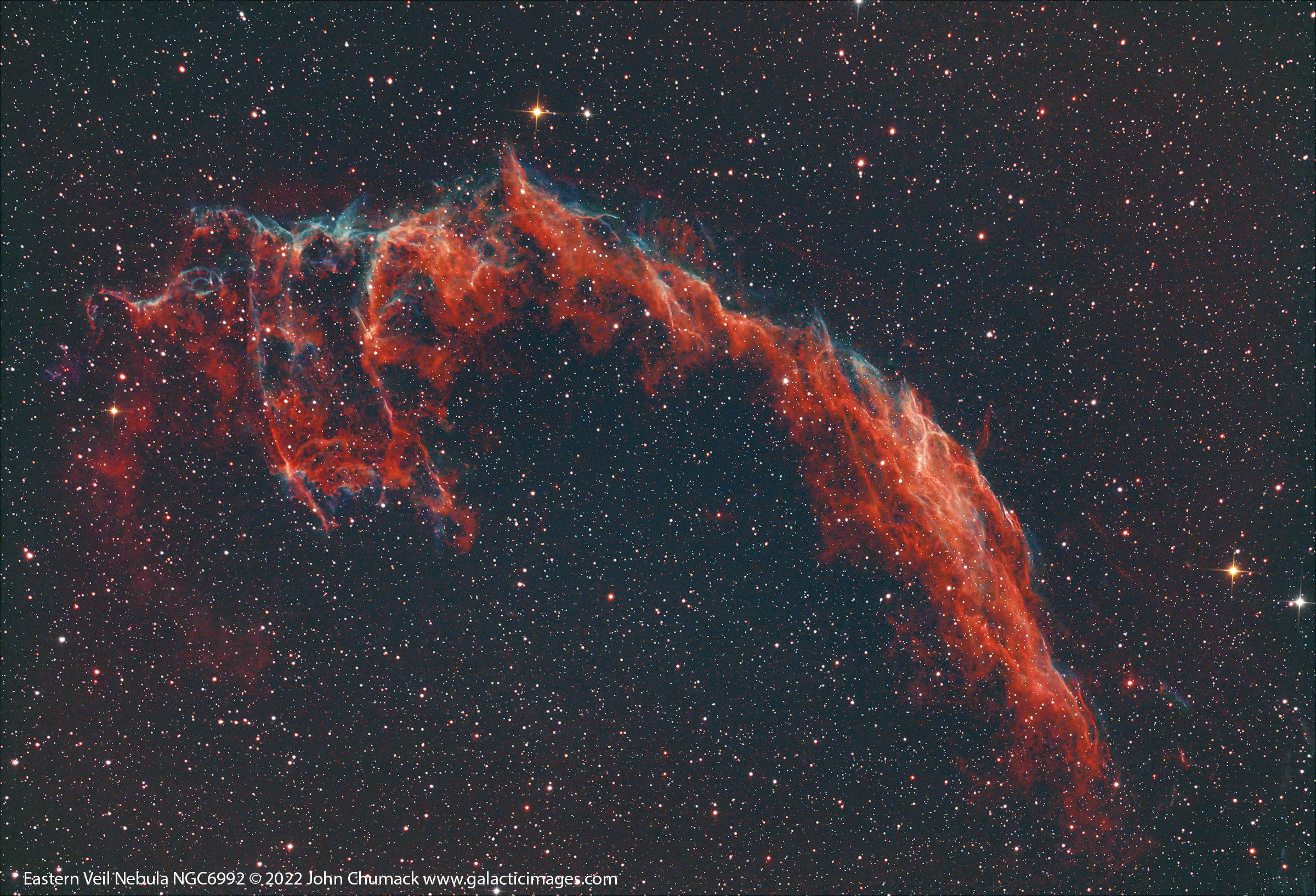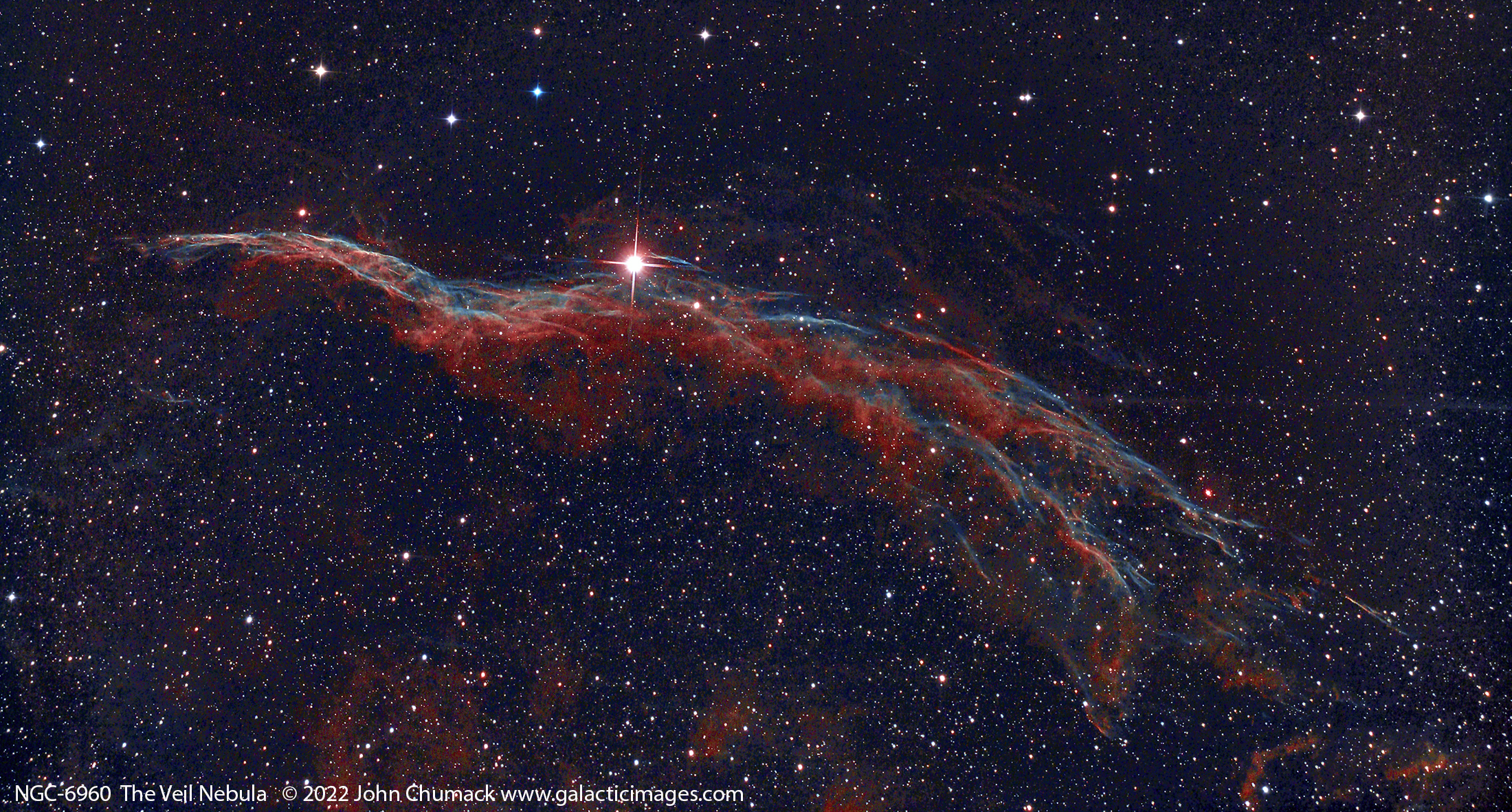M42 -M43 The Sword of Orion and The Running Man NGC-1973-75-77
NGC-253 Spiral Galaxy with 12 Inch + ZWO294MC
NGC-253 Spiral Galaxy
NGC-253, A Bright Galaxy In The Constellation of Sculptor.
NGC-253 is a relatively Nearby Galaxy, located at 11.4 Million Light years away, it shines at ~ Magnitude 8, so is visible in Binocular from a dark location.
I only got 31 minutes of data before high cirrus clouds came in on me…I’m surprised at how well it turned out considering it sits very low in the sky and I was shooting through a lots of hazy muck on the horizons that night.
I almost did not bother processing it, but glad I gave it a go anyway, picked up some nice dusty details too!
12 inch F4 TPO Newtonian telescope, Baader Coma Corrector, Bisque ME Mount, ZWO 294MC Cooled Cmos Camera, L-Pro Filter,
ASI Air via WiFi to Ipad, 31 x 1 minute subs, 31 minutes total integration exposure time on 10-21-2022 taken from my Observatories at JBSPO in yellow Springs, Ohio.
Best Regards,
John Chumack
www.galacticimages.com
NGC-7772 The Cluster that once was!
Often overlooked, but not forgotten…I really like this little gem of a chance alignment of a stars, just sitting out here all by itself.
NGC 7772 is a tiny collection of stars, spanning 3 arc minutes in the constellation Pegasus that were once thought to be an open cluster.
The stars were first recorded on 7 October 1825 by the British astronomer John Herschel.
It is located 4,900 light years away from Earth.
Recent Gaia Satellite data shows the stars in the area are unrelated.
Celestron C6 Newtonian Reflector, Baader Coma Corrector, Bisque MyT Mount, ZWO 294MC Cooled Cmos Camera, 10 x 120sec subs, 20 minutes total exposure integration time.
Captured on 09-20-2022 from my backyard observatory in Dayton, Ohio.
Best Regards,
John Chumack
M76 The Little Dumbbell Nebula, A Bipolar Planetary Nebula
M76 The Little Dumbbell Nebula, A dying star in Perseus, also known as Messier 76, NGC 650/651, the Barbell Nebula, or the Cork Nebula.
The structure is now classed as a bipolar planetary nebula (BPNe), denoting two stars which have burst, leaving neutron star or white
dwarf remnants and luminous envelopes.
The distance to M76 is currently estimated as 780 parsecs or 2,500 light years, making the average dimensions about 1.23 light years across.
Captured from my (Bortle8) Backyard observatory in Dayton, Ohio.
Celestron C6, 6 inch F5 Newtonian Reflector telescope, Baader Coma Corrector, Bisque MyT Mount, ZWO 294MC Cooled Cmos Camera, L-Enhance Filter, 30 x 120 sec. subs, total 60 minute integrated exposure time.
Best Regards,
John Chumack
www.galacticimages.com
The Full Disk Sun in Hydrogen Alpha Light and Sunspots AR3112 on 10-09-2022
Sadr & Gamma Cygni Nebula Complex _Wide Field
Bright Star Sadr and The Gamma Cygni Emission Nebula Region (wide field)
Here is a nice capture with a 135mm Lens, of this large nebulous region in the Constellation Cygnus.
The region has many catalog numbers and common names assigned pieces of the Nebula.
Lynds Catalog of Bright and Dark nebulae, and many Barnard’s Dark Nebula
LBN-259, LBN-257, LBN-251 LBN-239, LDN 893, LDN897, LDN-892, The Butter-Fly nebula IC-1318, The Propeller Nebula DWB-111, The Tilapia, The Sphinx, are all in this shot.
Several nice open Star clusters are visible as well like M29, Herschel H56-8, and IC-1311.
Bisque MyT Mount, Samyang 135mm Lens at F4, ZWO294MC Cooled Cmos Camera, L-Enhance, 41 x 2 minute subs, 82 minutes total integration time.
Captured from my backyard observatory in Dayton, Ohio on 08-12-2022.
Best Regards,
John Chumack
www.galacticimages.com
IC-1396 & Mu Cephei – Samyang 135mm lens
IC1396 The Elephant’s Trunk Emission Nebula Complex in Cepheus with the Garnet Star Mu Cephei.
The Elephant’s Trunk Nebula is a concentration of interstellar gas and dust within the much larger ionized gas region,
IC 1396 Nebula Complex is about 2,400 light years away from Earth.
Mu Cephei,(the bright 4th magnitude star at top) also known as Herschel’s Garnet Star, Erakis, or HD 206936, is a red super-giant or hyper-giant and is a variable star in the constellation Cepheus. It appears garnet red and is located at the edge of the IC 1396 nebula.
I captured this wide field shot with a Samyang 135mm lens & ZWO 294MC cooled Cmos Camera, L-Enhance Filter, Bisque MyT Mount, 60 x 120sec subs exposures, for a total of 2 hours of exposure time,
from my backyard Observatory in Dayton, Ohio on 08-182-2012, using the ASI Air app, captured via my I-pad.
Best Regards,
John Chumack
The Entire Veil Nebula Complex – A Supernova Remnant in Cygnus.
The Eastern Veil Nebula or Caldwell 33
Here is another Section of the Veil Nebula known as Caldwell 33 or the Eastern Veil NGC6992 and NGC 6995 and IC 1430 The Bat,
put it up full screen and check out the details.
The Veil Nebula is a cloud of heated and ionized gas and dust in the constellation Cygnus.
It constitutes the visible portions of the Cygnus Loop, a supernova remnant, many portions of which have acquired their own individual names and catalogue identifiers.
The source supernova was a star 20 times more massive than the Sun which exploded between 10,000 and 20,000 years ago, this star would have been brighter than Venus at the time of
its explosion.
This spans about 100 light years across and is located at 1470 light years from Earth.
I captured this A Celestron 6 inch F5 Newtonian telescope, ZWO 294MC Cooled Cmos Camera, Coma Corrector, L-Enhance Filter, Bisque MYT mount, EAF, ASI Air app via WiFi to IPAD,
from my backyard in Dayton, Ohio (Bortle8). 21 x 120 second subs, 42 minutes total integration time on 08-24-2022.
Best Regards,
John Chumack
www.galacticimages.com


